Viva l'Italia Blu-ray Movie
HomeViva l'Italia Blu-ray Movie 
GaribaldiArrow | 1961 | 129 min | Not rated | Jan 30, 2018
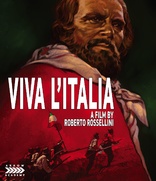
Movie rating
6.8 | / 10 |
Blu-ray rating
| Users | 0.0 | |
| Reviewer | 3.0 | |
| Overall | 3.0 |
Overview
Viva l'Italia (1961)
How Italy's historic national hero Giuseppe Garibaldi led a military campaign known as Expedition of the Thousand in 1860 and conquered Sicily and Naples.
Starring: Renzo Ricci, Paolo Stoppa, Franco Interlenghi, Giovanna RalliDirector: Roberto Rossellini (I)
| Foreign | Uncertain |
| Drama | Uncertain |
| History | Uncertain |
Specifications
Video
Video codec: MPEG-4 AVC
Video resolution: 1080p
Aspect ratio: 1.66:1
Original aspect ratio: 1.66:1
Audio
Italian: LPCM 2.0
Subtitles
English
Discs
Blu-ray Disc
Single disc (1 BD)
Playback
Region A (B, C untested)
Review
Rating summary
| Movie | 3.0 | |
| Video | 4.5 | |
| Audio | 3.0 | |
| Extras | 3.0 | |
| Overall | 3.0 |
Viva l'Italia Blu-ray Movie Review
Reviewed by Jeffrey Kauffman February 18, 2018One of the kind of odd things about my hometown of Portland is the fact that street names here often just kind of “magically” change despite the fact that you are undeniably on the same thoroughfare. One of those bizarre metamorphoses is in my very own neighborhood, where a Garibaldi Street just ups and changes to Juarez Street at an intersection, for no apparent reason. It actually took me a while to realize that the street names in this particular nook were all world leaders (don’t even get me started on another little cranny close by, where even Tanglewood Street didn’t alert me for a while that all the street names there were musically oriented, with many famous composers lending their surnames to various boulevards). Film fans may recall that the good old American movie industry memorialized Juarez in an epic 1939 film starring Paul Muni and Bette Davis, but it took the Italians themselves to offer a biographical ode to Garibaldi, though it’s kind of interesting to note that director Roberto Rossellini chose to entitle his effort Viva l’Italia, in an effort perhaps to point toward the “macro” elements of a story dealing with the unification of a nation, rather than explicitly pointing toward the man who was largely responsible for making that happen, this despite the fact that this character is undeniably (and probably unavoidably) the central focus of the story. (Just as interestingly, the film was redacted and released to English speaking countries as Garibaldi, a version which is also included on this Blu-ray as a supplement.) Viva l’Italia’s original Italian version begins with a brief allusion to the fact that its release year of 1961 marked the centenary of the unification of Italy, and there is therefore perhaps an almost hagiographic approach toward its subject matter.
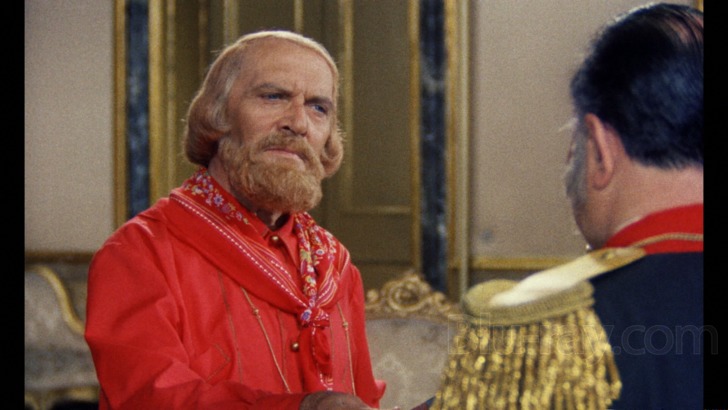
While there’s a bit of explanatory narration (more so in the English language version), some of the history preceding even the history on display on the film may potentially be confusing for those who aren’t overly well informed about Italy’s nation state past. Repeated cutaways to maps help to explicate not just the fractured state of the area, but in fact how Garibaldi (Renzo Ricci) traversed huge tracts of land in order to unite the country.
What happens in Viva l’Italia is arguably less interesting than how Rossellini goes about depicting it. A comment from Rossellini included in this package gives some insight into how he thought he was approaching the subject:
"Viva l’Italia is a documentary made after the event, trying to figure out what happened. I tried to place myself in front of the events of a century ago, the way a documentarist would have done who had the good fortune to follow Garibaldi’s campaign with a camera.”I’m not quite sure I can totally agree with Rossellini’s assessment of his own work, but in one way at least, it’s irrefutable: Rossellini’s staging and coverage of some of the epochal battle scenes. In this regard, it’s actually fascinating to compare and contrast Viva L’Italia with other war films helmed by iconic directors, and the first and perhaps most visceral example that came to my mind is Steven Spielberg’s staging and coverage of the D-Day landings in Saving Private Ryan. As anyone who has seen that movie will no doubt remember, Spielberg makes the viewer one of the men attempting to make a beach incursion despite horrifying carnage erupting all around them. Rossellini, on the other hand, films huge panoramas of skirmishing soldiers typically in wide shots, as if a general were keeping watch over his troops from a safe distance.
In other ways, though, Viva l’Italia is pretty traditional, perhaps even shockingly so for one of the most iconic names from the Neorealist Movement. Things are kind of staid and artificial at various points throughout this enterprise, in a way that kind of reminded me of another fifties’ epic about a legendary commander, Robert Rossen’s 1955 Alexander the Great. Rossellini suffers a bit from what I’d call “tableau-itis”, with large aggregations of characters standing around, typically in lines, discussing huge decisions of strategy or incipient nation building.
A couple of other presentational aspects may be at least a little on the comical side for some non-Italians (who presumably revere these characters), not the least of which is Garibaldi himself with his page boy haircut and ill fitting outfits. Renzi attempts to inject some real human emotion into this enterprise, but the most touching material actually comes courtesy of a minor supporting character whom video essayist Tag Gallagher suggests was fictional. Truth may be stranger than fiction, but sometimes movie versions require a little artifice.
Viva l'Italia Blu-ray Movie, Video Quality 
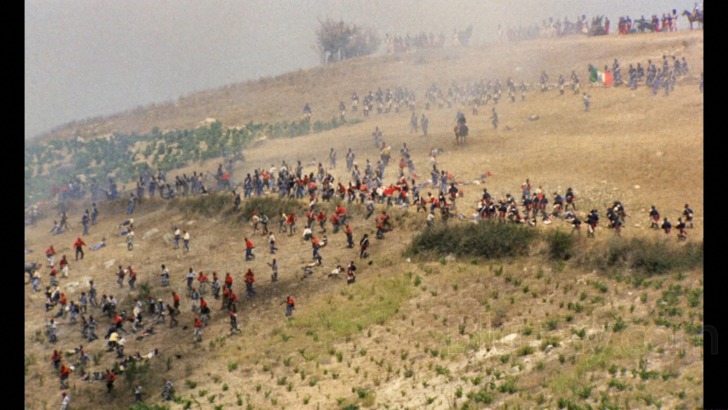
Viva l'Italia is presented on Blu-ray courtesy of Arrow Academy with an AVC encoded 1080p transfer in 1.66:1. Arrow's insert booklet contains the following information on the restoration:
Viva l'Italia has been exclusively restored by Arrow Films and is presented in its original aspect ratio of 1.66:1 with [the] original Italian mono soundtrack. The film is presented in its original and complete version.Aside from a couple of kind of odd issues, this is an extremely winning looking transfer, though the color (IMDb lists Eastmancolor) here actually reminded me a bit of Agfacolor, especially with regard to some of the blues, which pop quite convincingly. A lot of the production design actually traffics in blues and purples, with occasional dots of reds and the kind of orange-red uniforms that identify Garibaldi and some of his men. Detail levels are generally quite good, helped by Rossellini's fondness for midrange and close-up shots. Admittedly detail levels understandably fall a bit in the many wide shots that document some of the fights. While this restoration has resulted in a largely problem free experience, toward the end of the film, a couple of threads evidently got stuck in the gate and literally stick around for quite a while (see screenshot 19). It must have been prohibitively expensive to have digitally removed them, but the good news is they're the exception rather than the rule.
All restoration work was carried out at L'Immagine Ritrovata, Bologna. The original 35mm camera negative was scanned in 2K resolution on a pin- registered Arriscan and was graded on Digital Vision's Nucoda Film Master.
Thousands of instances of dirt, debris, scratches and other instances of film wear were repaired or removed through a combination of digital restoration tools and techniques. Image stability was also improved.
The mono Italian and English language tracks were remastered from the optical sound track negatives. There are times in which audio synchronisation will appear slightly loose against the picture, due to the audio being recorded in post-production.
The original film and audio elements for Viva l'Italia were made available for this restoration by Intramovies.
Garibaldi, the shorter English language version of this film, was constructed from the same restored elements.
Viva l'Italia Blu-ray Movie, Audio Quality 
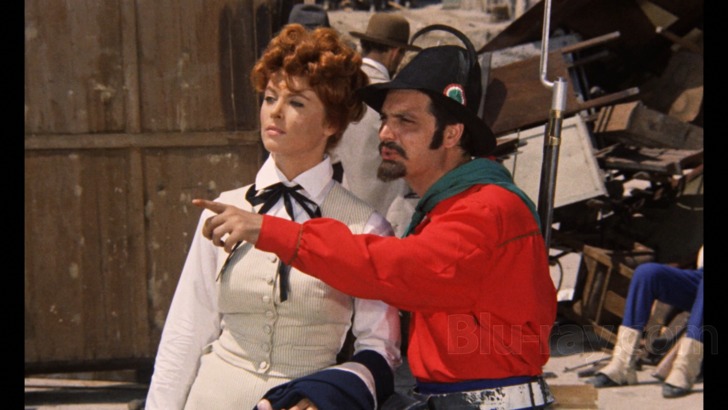
Unfortunately, Viva l'Italia is one of those efforts where the audio restoration can't quite match the video side of things. The Italian LPCM 2.0 mono track is decidedly on the boxy side, something that's especially apparent in the heraldic music that crops up with great regularity. But there's quite noticeable distortion in the midrange throughout this offering, something that attends both score and dialogue (interestingly, it's almost the timbre or general range of any given speaking voice that seems to exacerbate the issue). As with most Italian films which were dubbed in post- production, there's a slightly surreal feeling to the proceedings when dialogue doesn't quite match lip movements.
Viva l'Italia Blu-ray Movie, Special Features and Extras 
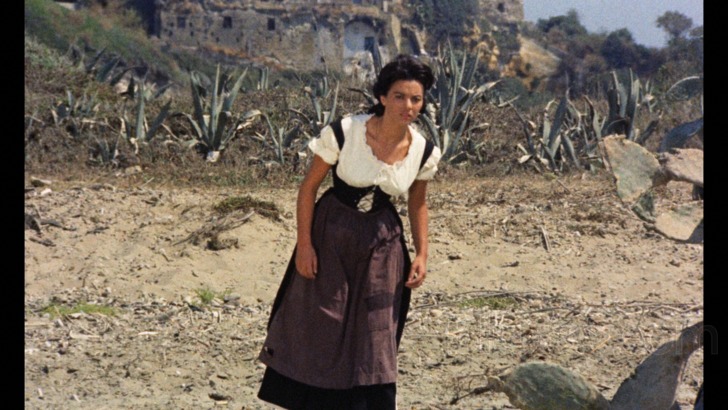
- Garibaldi (1080p; 1:24:09) is the shorter redacted English language version of the film.
- Viva Rossellini! (1080p; 32:57) is a really interesting interview with Ruggero Deodato, Rossellini's assistant on the film.
- "I Am Garibaldi" (1080p; 17:02) is a well done visual essay by Tag Gallagher, author of The Adventures of Roberto Rossellini: His Life and Films.
Viva l'Italia Blu-ray Movie, Overall Score and Recommendation 
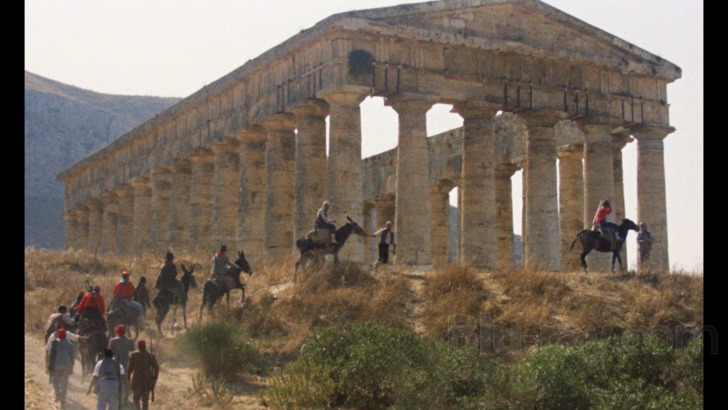
Baby Boomers unfamiliar with Viva l'Italia may be interested to know that a certain movie star named Ginger Grant shows up as a French journalist (in male attire, no less) for a few moments in this film. Weirdly, Tina Louise's cameo is more or less completely omitted from the English language version, despite the fact that even though this was pre-Gilligan's Island, Louise was already well known courtesy of appearances in films like God's Little Acre. I can't quite get on board with the assertion that Viva l'Italia is only a "slightly tweaked" version of Rossellini's neorealist roots, and in fact large swaths of this film play more or less exactly like an overblown Hollywood biographical epic. Audio has some deficits, but video is largely problem free on this nicely packaged release which also includes some enjoyable supplements.
Similar titles
Similar titles you might also like

The Tree of Wooden Clogs
L'albero degli zoccoli
1978

The First King: Birth of an Empire
Il Primo Re
2019

Mamma Roma
1962

Misunderstood
Incompreso
1966

I Fidanzati
1962

Goodbye to Language 3D
Adieu au langage
2014

Hands Over the City
Le mani sulla città
1963

Bitter Rice
Riso amaro
1949

Christ Stopped at Eboli
Cristo si è fermato a Eboli / Full-Length Version
1979

Il Posto
1961

Three Brothers
Tre fratelli
1981

Napoléon
Napoléon vu par Abel Gance
1927

Oedipus Rex
1967

Accattone
1961

La Strada
1954

Luna
La luna
1979

The Gospel According to St. Matthew
Il vangelo secondo Matteo
1964

The Night of the Shooting Stars
La notte di San Lorenzo
1982

Like Someone in Love
ライク・サムワン・イン・ラブ / Raiku samuwan in rabu
2012

Umberto D.
1952